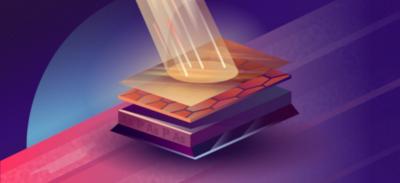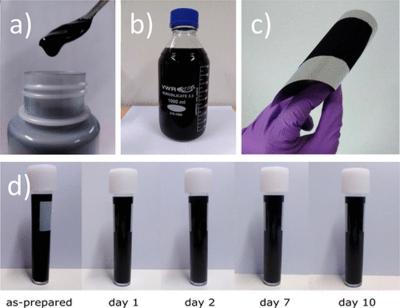
by MBF Admin | Apr 14, 2020 | 2D materials, Aerospace, AGM, Angstron Materials, Audio, Development, Graphene applications, Graphene Sensors, Investment, Products, Research, Technical / Research
MIPT scientists and their colleagues from Japan and the U.S. have calculated the parameters of photodetectors comprised by layers of graphene and a combination of black phosphorus and black arsenic.These sensors are able to detect radiation with energy less than the...

by MBF Admin | Apr 13, 2020 | 2D materials, Aerospace, AGM, Angstron Materials, Audio, Development, Graphene applications, Graphene Oxide, Investment, Products, Research, Technical / Research
Umeå researchers have shown how activated graphene, activated carbons and other hydrophobic carbons can be dispersed in water in a form of micrometer-sized particles. The key agent that helps to make these dispersions last for days is the use of graphene oxide....
by MBF Admin | Apr 10, 2020 | 2D materials, Aerospace, AGM, Angstron Materials, Audio, Development, Graphene applications, Graphene videos, Investment, Products, Research, Technical / Research
Researchers at Berkeley Lab, in collaboration with the Institute for Basic Science (IBS) in South Korea, Monash University in Australia, and UC Berkeley, have developed a technique that produces atomic-scale 3D images of nanoparticles tumbling in liquid between sheets...

by MBF Admin | Apr 8, 2020 | 2D materials, Aerospace, AGM, Angstron Materials, Audio, Development, Graphene applications, Graphene composites, Graphene Sensors, Investment, Products, Research, Technical / Research, Textiles
Researchers at Tsinghua University have used lasers to make graphene on Kevlar textiles, creating protective clothing that can record the wearer’s electrocardiogram (ECG) or sense a toxic gas.Prototype of an intelligent protective vest based on the Kevlar-laser...

by MBF Admin | Mar 27, 2020 | 2D materials, Aerospace, AGM, Angstron Materials, Audio, Development, Graphene applications, Graphene products, Graphene thermal conductivity, Investment, Products, Research, Technical / Research
Huawei has launched its Huawei P40 flagship phone family, that includes three different devices: the Huawei P40, Huawei P40 Pro and, a new addition to the line-up for 2020, the Huawei P40 Pro Plus. After many rumors about this line sporting a graphene battery –...
by MBF Admin | Mar 25, 2020 | 2D materials, Aerospace, AGM, Angstron Materials, Audio, Development, Graphene applications, Graphene DNA Sequencing, Graphene Sensors, Investment, Medicine, Products, Research, Technical / Research
Researchers at the University of Illinois at Urbana-Champaign have found that crumpling graphene makes it more than ten thousand times more sensitive to DNA by creating electrical “hot spots”. This discovery could assist in addressing a known issue of...





